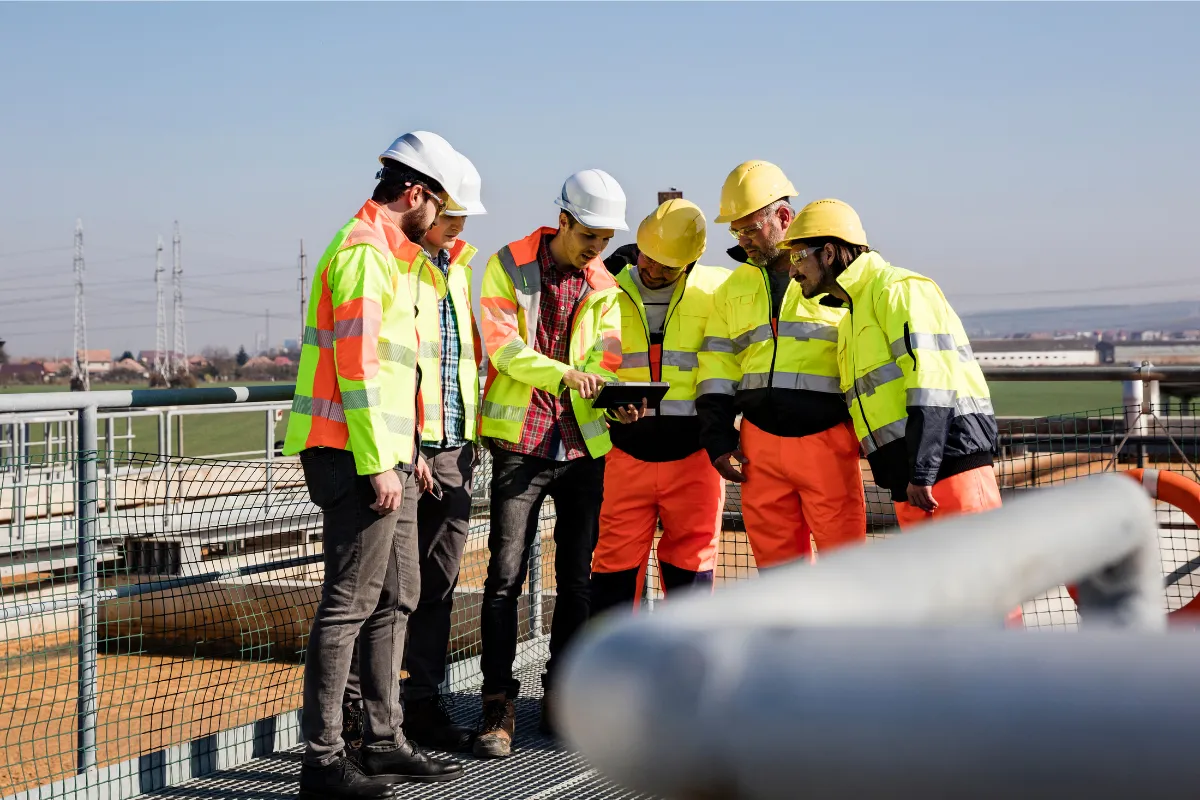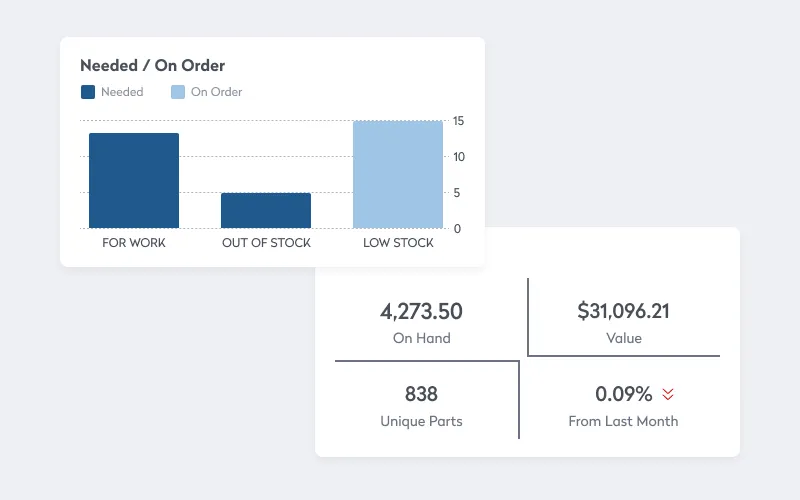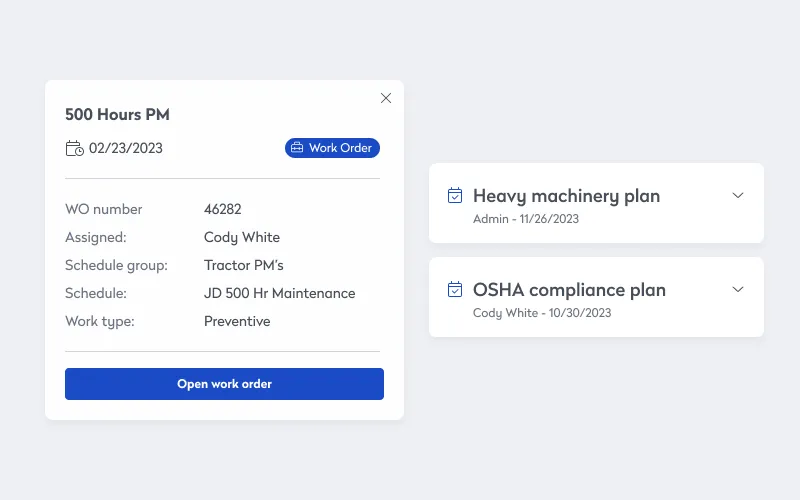
With five steps and eight core activities, total productive maintenance (TPM) supports processes for maintaining and improving your production, safety, and quality systems. With a focus on the assets and people that add value to an organization, TPM helps facility and maintenance departments do their jobs better, more easily, and with less stress.
What is the original total productive maintenance?
Between 1950 and 1970, Japanese companies spent a lot of time looking at how to fine-tune manufacturing, and they discovered the key was to get small groups of frontline employees involved in improvement projects. By 1971, they had combined all their insights into a formal system, TPM. Japan’s famous just in time (JIT) manufacturing practices, where parts arrive right before the production lines needs them, comes from and relies on TPM’s core principles and practices.
What is modern total productive maintenance?
More recent iterations of TPM share many of the same goals as any modern maintenance department, including:
- Less downtime
- More uptime
- Improved safety
- Less stress
Another connection is how modern facility management software makes implementing total productive maintenance easier. With a unified asset management solution, you can implement TPM principles and practices more easily.
Modern TPM includes two main sections, the 5S foundation and the eight pillars. To understand the entire system, you need to look closely at the two sections.
What is the TPM 5S foundation?
Begin with a list of things to do around your facilities. The idea is to arrange everything perfectly, to create the best environment, and then maintain it.
There’s some disagreement on how to translate the words from the original Japanese, but the generally accepted 5S are:
- Sort
- Set in order
- Shine
- Standardize
- Sustain/self-discipline
It’s important to remember that it’s a numbered list and that you need to complete the steps in order. Later steps include references to and depend on earlier ones.
Sort
At this step, you need to declutter. Get rid of anything that doesn’t need to be there. Some things you move to better spots. Others, you throw out. When you get rid of clutter in the maintenance department’s tool crib and inventory, techs can find what they need faster. When you do it around assets, maintenance techs can see potential problems more easily during routine walkthroughs. And when they’re working on assets, there’s less to move out of the way before they can start.
Clutter kills time on wrench. Get rid of it.
Set in order with facility and maintenance management software
Next, take what’s left and start organizing it. A place for everything and everything in its place. It generally makes the most sense to organize things in terms of workflows. For operators, that means having everything laid out according to the steps they follow with an asset. It can be helpful to think of every workstation as a mini assembly line.
But for the maintenance department, it’s a bit different. Here we have the first step in the TPM process where facility management solutions come in handy. Take the maintenance department’s inventory, for example. What’s the best way to organize everything? Some of your decisions are going to be related to safety. Heavy objects need to go on bottom shelves, for example. Other inventory might have specific requirements for ambient temperature. For example, you can’t keep anything under pressure out in the corrugated tin shed under the hot sun. For everything else, you want to organize it so the stuff you use most often is the easiest to find and pull out.
With its built-in inventory management, your asset management solution helps by taking out the guesswork. Need to know what materials are getting used most often? Check historical work orders and purchase orders. And you can do the same for replacement parts.

Whatever spare part gets used most, put it on the eye-level shelf by the door.
Shine
You’re down to just the essentials and you’ve got them sorted to smooth out everyone’s workflows. Now you need a way to ensure all that work lasts. Shine means creating times when you go back and tidy up, making sure everything is working properly and in its assigned spot.
Standardize
It’s great to want to shine, but it’s also easy to forget. Over time, the things you sorted and set return to their natural state: disorganized clutter. Standardize is where you set up a shine schedule. For operators, the last 15 minutes of each shift can be set aside for shining. That way, the next shift always starts with a nice clean workstation.
For the maintenance department, shining can be scheduled in the CMMS as a preventive maintenance work order (PM) with a customizable checklist of tasks. Once it’s scheduled, the department can see it in the easy-to-read calendar dashboard.
You can set up the software to send out email reminders, making PMs impossible to forget. It might slip your mind later, but the software always remembers.
Sustain/self-discipline
At this step, you’re locking in your ongoing gains by making sure operators and maintenance techs see the value of total productive maintenance. Japanese manufacturers found that one of the best ways to get buy-in from frontline employees was to ask them for input. If part of the process is setting up a shine schedule, it’s a good idea to ask for suggestions from everyone involved. How often should operators and techs be “shining?” What specific tasks need to be built into the PMs? The more people feel their opinions matter, the more they feel the program matters.
What are the eight pillars of total productive maintenance?
In the TPM metaphor, the 5S are the foundation. The eight pillars stand on that foundation, holding up the roof. You can do them in any order.
Autonomous maintenance
Although the name seems to suggest otherwise, it’s not the assets maintaining themselves. It’s the operators taking over the simple maintenance tasks. Think of the asset as a house and the operator as the homeowner. The maintenance techs are trades. If the homeowner calls in a trade every time the lawnmower needs more gas, things move slowly and cost a lot of money. It makes more sense for the homeowner to look after as much as they reasonably can, only calling in a trade when they can’t safely take care of a problem themselves. Adding oil and cleaning out grass clippings are on the homeowner, but they call a trade when the pull cord breaks, or the engine mysteriously dies.
Planned maintenance
Here, planned just means preventive. Instead of waiting for something to go wrong, you’re proactively looking for and fixing small issues before they have a chance to grow into big problems. A fine-tuned preventive maintenance program delivers a lot of benefits, including:
- Reduced downtime
- Increased uptime
- Easier inventory control
- Fewer on-demand work orders
A modern unified asset management platform is essential to an efficient program. The software lets you look back and then plan.

First, it collects all your work order data in one central database, keeping it both safe and accurate. The software keeps your data updated in real time and backs it up all the time. It also makes your data accessible from any mobile device, anywhere and at any time. Second, autogenerated reports packed with maintenance metrics and key performance indicators help leverage raw data into actionable insights.
When you can quickly look back and see how often an asset has broken down, for example, you can set the right preventive maintenance cadence, inspections, and tasks. If you can quickly see that a motor belt slipped out of alignment about every three weeks over the last three months, for example, you can schedule a tech to inspect and adjust it every two and a half weeks.
Quality maintenance
Here again, it’s just another name for a well-known process. Basically, it’s root-cause analysis, where instead of just fixing a problem, you try to determine what caused it. The standard advice is to work backward toward the original source of the problem by asking “why” five times.
For example, let’s say the problem is your car won’t start.
One: “Why won’t the car start?”
Answer: It’s the dead battery.
Two: “Why is the battery dead?”
Answer: The alternator is not functioning, so the batter wasn’t charged.
Three: “Why was the alternator not functioning?”
Answer: The belt broke.
Four: “Why did the belt break?”
Answer: It became brittle from age and use.
Five: “Why hadn’t the old belt been changed?”
Answer: The manufacturer’s maintenance recommendations were not being followed.
You won’t always get five spots back. But five is considered a good rule of thumb.
Using accurate maintenance data to see what work the techs did and how they did it, you can figure out what was missed. Also, once you’ve finished your root-cause analysis, you can set up PMs to make sure you don’t have to keep on dealing with the same issues.
Focused improvement
The theory here is that improvement is an ongoing process. You’re always looking for another way to get better, even if it’s only a simple step toward a small improvement. Everyone on the team shares this responsibility. Everyone has their eyes open for chances to get better.
Asset management software supports this pillar in a couple of ways. The customizable instructions and checklists in work orders and PMs means the maintenance team does work the same way every time. Before you can find ways to improve your workflows, you need to ensure the current ones are being followed.
They also make it easier for the maintenance department to adopt new processes and facility maintenance workflows. Instead of having to sit down and explain everything to each technician, managers can simply update the work order templates.
Early equipment maintenance
Assets and equipment tend to be more expensive to maintain as they get older. But they can also be expensive right at the start. Installation, breakdowns from inexperienced operators, and technicians taking more time to repair unfamiliar assets all cost money.
So, for this pillar, organizations try to avoid these early problems by making sure operators and technicians get machines that are easy to learn and repair. A simple example can be how the placement of access panels can have a huge effect over an asset’s life.
Education and training and administrative & office TPM
These two are close enough we can talk about them as one. Here, you’re a TPM evangelist, sharing the benefits up and down the organizational chart and from the frontlines to the front office. The idea is that once everyone understands the benefits of the steps and pillars, they’ll support the project and embrace implementation.
Safety health environmental conditions
Companies care about the health and safety of their employees, and they do everything they can to prevent accidents. They also care about the bottom line, and accidents can be costly with regulatory and environmental fines. Big accidents can destroy a company’s most important asset, its reputation.
Asset management solutions make your facilities safer. The open maintenance request portal means anyone can reliably reach the maintenance department with safety concerns. When an operator sees that a safety bar is loose or there’s an oil spot beside an asset causing a slip hazard, the maintenance department knows about it right away, so they can ix it before anyone gets hurt.
Although it has its roots in the Japanese automotive industry, companies worldwide and across industries now use TPM to systematically cut downtime and improve safety. It’s important to remember that many of the steps are iterative, so you need to keep going back and redoing them. Over time, and with the right software solution to support the overall project, you can see continuous improvement.


